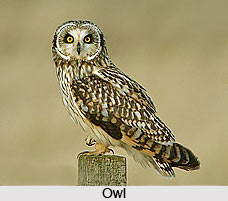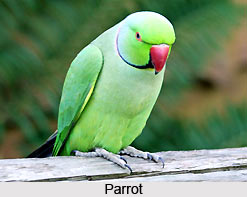 Omens related to birds are age old. They have existed since ancient ages. An omen is a phenomenon that is believed to foretell the future. It is believed that Gods send messages to human beings through birds such as owl, parrot, crow, eagle, etc. When one learns to listen to Gods" language, one starts to hear and see things in a totally different light. According to Vastu Shastra, these birds are responsible for both good and bad omens.
Omens related to birds are age old. They have existed since ancient ages. An omen is a phenomenon that is believed to foretell the future. It is believed that Gods send messages to human beings through birds such as owl, parrot, crow, eagle, etc. When one learns to listen to Gods" language, one starts to hear and see things in a totally different light. According to Vastu Shastra, these birds are responsible for both good and bad omens.
Omens Related to Owl
•Hooting of an owl on the right hand side is considered auspicious.
•Seeing an owl on the left side is also thought to be auspicious.
•When an owl sits on the roof of a house or on the head of a person it indicates total destruction.
•If a person sees the romance of two owls his life may be shortened.
•The nails and paws of an owl are auspicious for the gain of wealth.
Omens Related to Parrot

•While going out of the house if a parrot chirps facing the East, it results in success in the work undertaken.
•If the parrot calls out while facing towards the South-East, one`s enemies are sure to be defeated.
•If a parrot in a cage sits quietly with its face towards the North-East, there are chances of a theft in the house.
•If the parrot jumps with its face towards the South, it is assumed that someone dear to the family will definitely be met.
Omens Related to Crow
•If a crow coming from the South-East direction in the evening is seen, it indicates monetary gain.
•If a crow passes from the left crowing, it is considered a good omen.
•The crowing of a crow on the roof is considered inauspicious.
•A person is likely to gain jewelry when a crow crows with his face towards the South-East direction.
•If a crow comes into the house and crows, it indicates the coming of guests.
Omens Related to Eagle
•If an eagle has appeared, it bestows freedom and courage to look ahead.
•If an individual has been going through a hard time, eagle signals a new beginning and provides that person with the resilience to endure the difficulties.




















